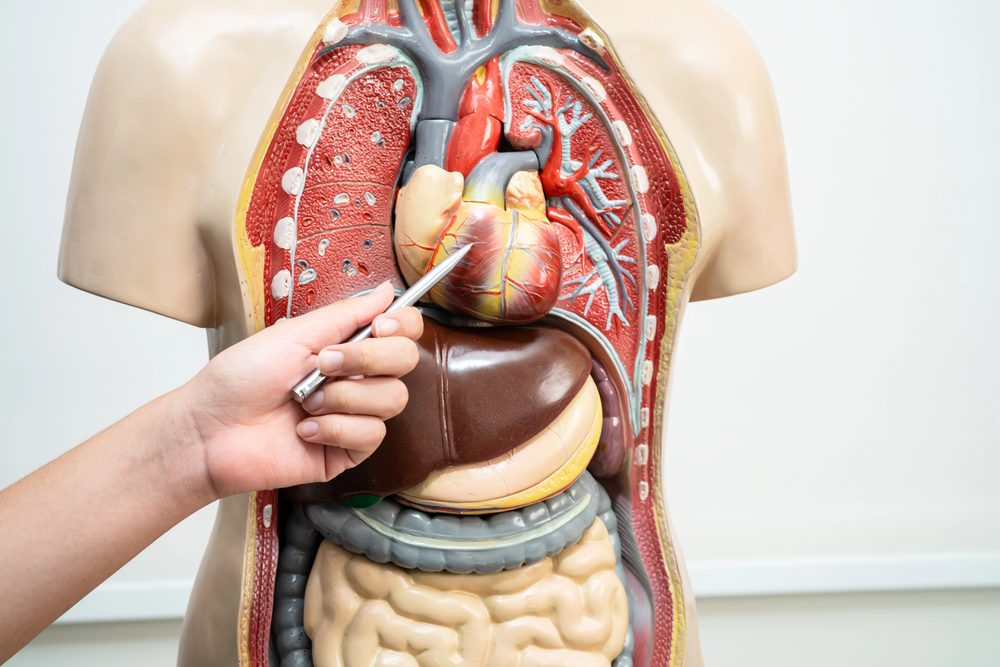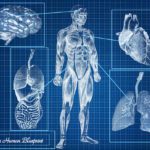Anatomy and physiology online courses have changed the way students learn about the human body’s structure and functions. These comprehensive digital learning programs offer a flexible path to understanding complex biological systems, making quality education accessible to aspiring healthcare professionals, science enthusiasts, and lifelong learners.
The digital transformation in education has positioned these courses as valuable alternatives to traditional classroom settings. You’ll find robust curriculums that combine:
- Interactive 3D models of body systems
- Virtual laboratory experiences
- Self-paced learning modules
- Real-time feedback mechanisms
- Collaborative discussion platforms
The demand for anatomy and physiology knowledge spans across multiple fields:
- Healthcare and medicine
- Physical therapy
- Sports science
- Nursing
- Medical research
- Health education
Whether you’re pursuing a career in healthcare, such as obtaining an EMR certification or seeking to expand your scientific understanding, selecting the right online anatomy course is crucial. This guide will walk you through essential course features, learning methods, assessment strategies, and accreditation standards. You’ll discover how to evaluate course offerings, understand credit transfer possibilities, and identify programs that align with your educational goals.
For instance, if you’re interested in nursing, exploring online nursing prerequisites could be beneficial.
Let’s explore the world of online anatomy and physiology education to help you make an informed decision about your learning journey.
Understanding Anatomy and Physiology
Anatomy and physiology are two essential areas of study when it comes to understanding the human body. Anatomy is all about looking at the physical structure of different body parts and how they relate to each other. On the other hand, physiology dives into how these structures work and cooperate to keep us alive.
The 11 Organ Systems
To fully grasp how the body functions, we need to explore its major organ systems. There are 11 of them in total:
- Skeletal System: This system consists of 206 bones that provide support, protection, and enable movement.
- Muscular System: Movement is powered by both voluntary and involuntary muscle contractions in this system.
- Cardiovascular System: Nutrients, oxygen, and waste products are transported throughout the body via blood circulation.
- Respiratory System: Gas exchange between our bodies and the environment takes place through this system.
- Nervous System: Body functions are controlled by electrical signals transmitted through this system.
- Digestive System: Food is broken down for energy production and nutrient absorption in this system.
- Endocrine System: Hormones produced by this system regulate various bodily functions.
- Lymphatic System: Fluid balance is maintained while immune function is supported by this system.
- Urinary System: Waste products are removed from the body while fluid balance is regulated in this system.
- Reproductive System: Continuation of our species occurs through reproduction facilitated by this system.
- Integumentary System: Skin, hair, and nails protect our internal organs as part of this system.
The Importance of Homeostasis
One crucial concept in anatomy and physiology is homeostasis, which refers to the body’s ability to maintain internal stability despite external changes. Various factors such as temperature, blood pressure, blood sugar levels, oxygen levels, pH balance, and fluid balance can disrupt this equilibrium.
To restore balance, complex feedback mechanisms come into play:
- When your body temperature rises above normal, sweat glands activate to cool you down through evaporation.
- If blood sugar drops after a long period without food intake or intense physical activity, your pancreas releases hormones like glucagon to raise it back up.
Implications for Medical Professionals
Understanding these systems and their interactions is crucial for medical professionals in several ways:
- Diagnosing diseases accurately
- Planning effective treatments tailored to individual patients
- Predicting potential complications based on underlying conditions
- Making informed clinical decisions during patient care
- Providing holistic care that addresses not just symptoms but also root causes of diseases
The intricate relationship between structure (anatomy) and function (physiology) forms the foundation of medical knowledge. By studying how alterations in structure can lead to changes in function, healthcare providers gain insights into various health conditions and develop targeted interventions accordingly.
Course Structure and Content
Modern anatomy and physiology online courses blend structured learning with hands-on experience through innovative digital platforms. These courses typically span 16 weeks, divided into distinct modules that build upon each other systematically.
Core Components of Online A&P Courses:
1. Virtual Classroom Sessions
- Live or recorded lectures
- Interactive discussions
- Real-time Q&A sessions
- Group study activities
2. Laboratory Experience
- Virtual dissection simulations
- 3D anatomical models
- Interactive microscopy
- Digital cadaver studies
3. Assessment Methods
- Weekly quizzes
- Lab reports
- Case study analyses
- Practical examinations
The curriculum follows a logical progression, starting with basic cellular structure and advancing to complex organ systems. Students begin with foundational concepts in Anatomy and Physiology 1, which covers:
- Cell Biology and Histology
- Integumentary System
- Skeletal System
- Muscular System
- Nervous System
Virtual labs complement theoretical learning through practical applications. Students perform simulated experiments, conduct virtual dissections, and analyze medical case studies. These hands-on components help develop critical thinking skills essential for healthcare professions.
Practical Applications Include:
- Measuring vital signs through digital simulations
- Analyzing blood samples virtually
- Conducting muscle function tests
- Examining tissue samples under virtual microscopes
- Performing virtual cadaver dissections
Many programs offer specialized tracks tailored to specific career paths:
- Nursing Track: Enhanced focus on clinical applications
- Pre-med Track: Detailed pathophysiology coverage
- Allied Health Track: Emphasis on practical skills
The virtual laboratory component typically requires 2-3 hours per week, with additional time for theoretical study and assignments. Students access course materials through learning management systems that track progress and provide immediate feedback.
Technology Integration:
- HD video demonstrations
- Interactive anatomy software
- Virtual reality simulations
- Mobile-friendly study tools
- Online collaboration platforms
These structured online courses maintain rigorous academic standards while offering flexibility for working professionals and distance learners. The combination of theoretical knowledge and practical applications prepares students for advanced healthcare studies or professional certifications.
Advanced Studies in Anatomy and Physiology
Advanced anatomy and physiology courses delve deep into complex body systems, offering specialized knowledge crucial for healthcare professionals. These courses build upon foundational concepts to explore intricate physiological mechanisms and their clinical implications.
The Endocrine System
- Hormone synthesis and secretion pathways
- Feedback mechanisms controlling hormone release
- Integration with nervous system function
- Metabolic regulation and homeostatic control
- Pathophysiology of endocrine disorders
Cardiovascular System Dynamics
- Advanced heart physiology during rest and exercise
- Blood flow regulation mechanisms
- Cardiac output calculations and clinical significance
- Vascular resistance and blood pressure control
- Exercise physiology and cardiac adaptation
Complex System Interactions
- Neuroendocrine regulation
- Immune system responses
- Digestive system absorption mechanisms
- Renal filtration dynamics
- Respiratory-cardiovascular integration
Healthcare professionals need this advanced knowledge to:
- Diagnose complex medical conditions
- Understand medication mechanisms
- Interpret laboratory results accurately
- Develop effective treatment plans
- Recognize system interactions in disease states
Advanced anatomy and physiology online courses incorporate sophisticated virtual simulations and case studies. You’ll analyze real medical scenarios, perform virtual dissections, and study 3D anatomical models. These tools help visualize complex processes like:
- Signal transduction pathways
- Hormone cascade effects
- Blood flow patterns through heart chambers
- Neural transmission sequences
- Cellular transport mechanisms
The coursework often includes research paper analysis and scientific literature review, preparing you for evidence-based practice in healthcare settings. You’ll learn to interpret medical imaging, understand pathophysiology reports, and apply this knowledge in clinical decision-making processes.
Interactive Learning Methods in Online Courses
Modern anatomy and physiology online courses embrace dynamic learning approaches that transform complex biological concepts into engaging educational experiences. These virtual classrooms leverage cutting-edge technology to create immersive learning environments.
1. Virtual Lab Simulations
- 3D anatomical models for hands-on exploration
- Real-time dissection simulations
- Interactive tissue examination tools
- Virtual microscopy for cellular studies
2. Collaborative Learning Tools
- Live discussion boards for peer-to-peer interaction
- Virtual study groups
- Case study analysis sessions
- Expert-led webinars
The integration of multimedia resources enriches the learning experience through:
- High-definition videos demonstrating physiological processes
- Animated sequences explaining complex body systems
- Interactive diagrams for organ system exploration
- Audio lectures with visual aids
3. Assessment and Practice Tools
- Self-paced practice quizzes
- Virtual flashcards
- Interactive matching exercises
- Progress tracking dashboards
Many accredited online anatomy courses incorporate adaptive learning technology that personalizes the educational experience based on your performance and learning style. These systems identify knowledge gaps and adjust content delivery to strengthen understanding of challenging concepts.
4. Real-World Applications
- Clinical scenario simulations
- Patient case studies
- Virtual patient interactions
- Medical imaging analysis
The incorporation of gamification elements maintains student engagement through:
- Achievement badges for completed modules
- Progress-based rewards
- Learning challenges
- Interactive knowledge checks
These interactive methods create a comprehensive learning environment that rivals traditional classroom experiences. Students gain practical knowledge through hands-on virtual experiences, reinforcing theoretical concepts with active participation and immediate feedback systems.
Assessing Knowledge Acquisition: Quizzes to Final Projects
Online anatomy and physiology courses use various assessment methods to measure your understanding and retention of complex biological concepts. These methods create a comprehensive evaluation system that tracks your progress throughout the course.
Common Assessment Types:
- Weekly Quizzes: Multiple-choice questions testing terminology, diagram labeling exercises, true/false statements on physiological processes, fill-in-the-blank questions on anatomical structures
- Laboratory Assignments: Virtual dissection reports, case study analyses, data interpretation exercises, physiological process simulations
- Mid-Term Assessments: System-specific examinations, practical identification tests, clinical scenario evaluations, integration of multiple body systems
- Final Projects: Research papers on specific organ systems, disease process analysis presentations, body system interaction models, clinical case presentations
The assessment structure typically follows a building block approach. You’ll start with basic concept testing through quizzes, progress to more complex laboratory assignments, and culminate in comprehensive final projects that demonstrate your mastery of both anatomical structures and physiological processes.
Many courses incorporate adaptive testing technology that adjusts question difficulty based on your performance. This personalized approach helps identify knowledge gaps and provides targeted feedback for improvement.
The grading system often includes:
50% – Ongoing Assessments 30% – Laboratory Work 20% – Final Project
These varied assessment methods ensure you can demonstrate your understanding through different formats, accommodating diverse learning styles while maintaining academic rigor.
Duration Flexibility and Credit Transferability Considerations
Online anatomy and physiology courses offer remarkable scheduling flexibility, adapting to your unique life circumstances. Most institutions provide a 3-12 month completion window, letting you progress at your own pace while managing work, family, or other academic commitments.
Typical Course Duration Options:
- Self-paced courses: Complete within 3-6 months
- Structured semester-based: 16-week format
- Accelerated programs: 8-week intensive study
- Extended access: Up to 12 months for completion
Credit transferability stands as a crucial factor when selecting an anatomy and physiology online course. Most accredited programs offer 3-4 credit hours per course, equivalent to traditional classroom-based instruction. These credits can potentially transfer to other institutions, supporting your educational journey.
Key Credit Transfer Considerations:
- Verify the course’s accreditation status
- Check your target institution’s transfer policies
- Request pre-approval from your academic advisor
- Obtain detailed course syllabi and descriptions
- Maintain documentation of course completion
Many institutions have established articulation agreements with other schools, creating clear pathways for credit transfer. You’ll find anatomy and physiology courses particularly transferable within healthcare-related programs, including nursing, physical therapy, and pre-medical tracks. For instance, if you’re considering becoming an EMT, these courses could be quite beneficial in terms of foundational knowledge and the duration it takes to become an EMT, which often includes such subjects.
Credit Hour Breakdown:
- Lecture component: 3 credit hours
- Laboratory section: 1 credit hour
- Combined course total: 4 credit hours
The flexibility extends beyond completion timeframes – you can often start these courses at any time throughout the year. This rolling enrollment system eliminates the need to wait for traditional semester start dates, allowing you to begin your studies when it best suits your schedule.
Accessibility Features for Diverse Learners in Online Courses
Online anatomy and physiology courses embrace inclusive learning through adaptive technologies and flexible content delivery methods. These programs recognize that each student processes information differently, implementing features that accommodate various learning preferences and needs.
Key Accessibility Features:
- Screen Reader Compatibility: Course materials are optimized for text-to-speech software, enabling visually impaired students to access content effectively
- Closed Captioning: Video lectures include accurate subtitles for hearing-impaired learners
- Adjustable Text Settings: Students can modify font sizes, colors, and contrast levels to suit their visual needs
- Multiple Format Options: Content is available in various formats:
- Audio recordings
- Written transcripts
- Visual diagrams
- Interactive 3D models
Learning Style Adaptations:
- Visual Learners: High-quality anatomical illustrations and detailed diagrams
- Auditory Learners: Narrated presentations and audio explanations
- Kinesthetic Learners: Virtual dissection labs and interactive simulations
- Reading/Writing Preference: Comprehensive text materials and note-taking tools
Many programs incorporate Universal Design for Learning (UDL) principles, providing multiple ways to:
- Present information
- Express knowledge
- Engage with content
These courses also feature self-paced learning options, allowing students to revisit complex topics and spend additional time on challenging concepts. Built-in progress tracking tools help learners monitor their advancement through the material, while adaptive quizzes adjust to individual performance levels.
Required Materials: eTextbooks vs Open Educational Resources
The choice between eTextbooks and open educational resources impacts both your learning experience and budget when studying anatomy and physiology online.
eTextbooks
- Professional publishing houses create detailed, peer-reviewed content
- Interactive features like 3D models and self-assessment tools
- Regular updates with current medical research
- Higher cost, ranging from $80-200 per book
- Access often limited to specific time periods
Open Educational Resources (OER)
- Free, accessible materials from platforms like OpenStax
- Comprehensive coverage of essential topics
- Downloadable content for offline studying
- Community-driven updates and improvements
- Customizable to fit specific learning needs
Additional Learning Materials
- Virtual anatomy labs
- Digital flashcards
- Mobile apps for on-the-go studying
- Video demonstrations
- Practice question banks
Many successful students combine both resources – using OER materials for core concepts while investing in specific eTextbooks for advanced topics or specialized areas. Some institutions include eTextbook costs in their course fees, providing seamless access to required materials through their learning management systems.
The quality of OER materials has improved significantly, with platforms like Khan Academy and OpenStax offering content comparable to traditional publishers. These resources undergo rigorous peer review processes and maintain high academic standards while remaining cost-effective alternatives to commercial textbooks.
Accreditation Standards for Quality Assurance in Online Programs
Accreditation serves as a critical quality indicator for anatomy and physiology online courses. When you choose an accredited program, you gain assurance that the course meets established educational standards and industry requirements.
Key Benefits of Accredited Programs:
- Recognition by employers and educational institutions
- Eligibility for financial aid opportunities
- Seamless credit transfer between institutions
- Standardized curriculum quality
- Regular program evaluations and updates
Regional accrediting bodies like the Higher Learning Commission (HLC) and the Southern Association of Colleges and Schools Commission on Colleges (SACSCOC) evaluate online anatomy and physiology programs based on specific criteria:
- Faculty qualifications and expertise
- Course content alignment with industry standards
- Learning resources and support services
- Student assessment methods
- Technology infrastructure
Verifying Accreditation Status:
- Check the institution’s website for accreditation information
- Visit the accrediting body’s official database
- Review the U.S. Department of Education’s Database of Accredited Postsecondary Institutions
Professional organizations such as the American Association of Anatomists (AAA) and the American Physiological Society (APS) also provide additional validation for specialized anatomy and physiology courses through program endorsements and partnerships with educational institutions.
Popular Choices Among Aspiring Healthcare Professionals: A List of Recommended Anatomy And Physiology Online Courses
Here’s a curated selection of highly-rated, accredited anatomy and physiology online courses:
- StraighterLine Anatomy & Physiology I & II
- Self-paced learning
- Lab components included
- Credit transfer partnerships with 150+ colleges
- 3-4 months average completion time
- University of Phoenix BIO/290
- Structured 8-week format
- Virtual lab simulations
- Regional accreditation
- Direct alignment with healthcare programs
- Arizona State University (ASU) Introduction to A&P
- Comprehensive course material
- Interactive learning modules
- Higher Learning Commission accredited
- Flexible start dates
- University of North Dakota BIMD 220
- Detailed system-based approach
- Real-world clinical applications
- Full laboratory component
- 12-week completion timeline
These programs offer varying levels of depth, flexibility, and specialization to match your educational goals and career path requirements.



